In Part 2 of this series we talked about some upgrades that should be considered. In this article we will talk about handgun fit, which probably should have been part of your purchase decision, I apologize.
Your pistol needs to fit your hand correctly. If it is too small or too large you will not have a proper grip and will have trouble aligning to the target.
I recommend you contact a training academy near you and set a time to visit an experienced instructor and ask for help getting a proper grip on your handgun. They should be willing to guide you in this well before you take a class. This way you can get the most out of the training when you go. Every one of the instructors I know personally will do this for free. I do not recommend the local gun / pawn shop or big box retailer for this information. There are too many incorrect theories out there.
With the grip you need to consider your whole hand. Your palm and fingers combined. Make sure it fits your hand. You need to be able to wrap around the entire pistol and properly reach the trigger, safety, magazine release and, if applicable, de-cocker with minimal (or better yet, no) hand movement. All combines for controlling the weapon and the best recoil management.
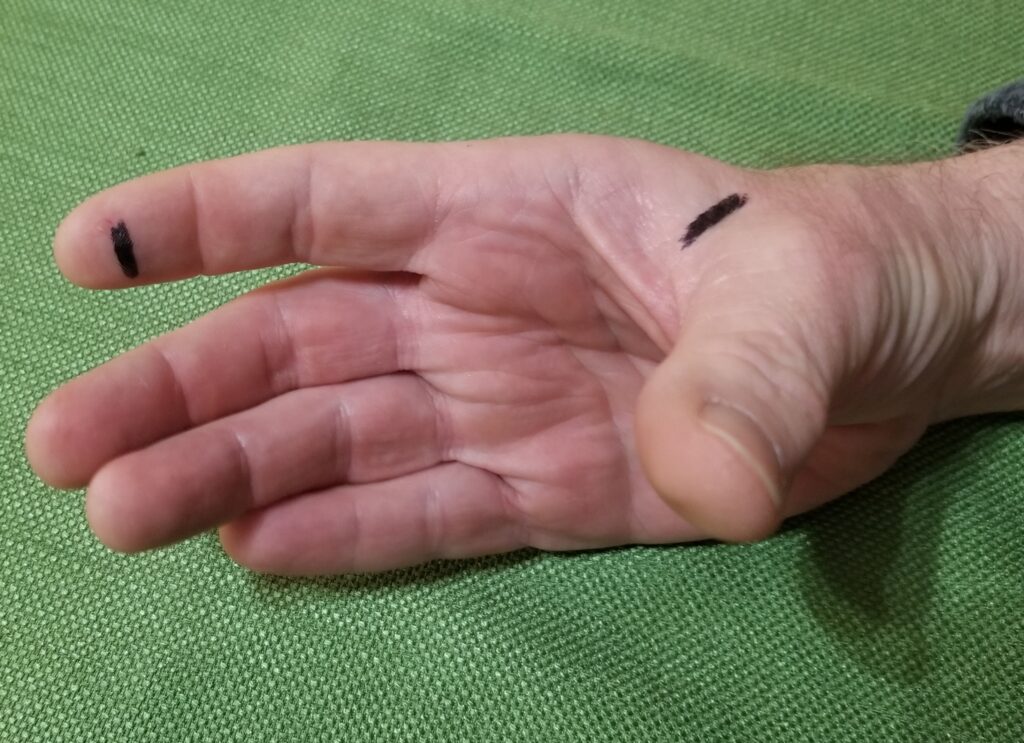
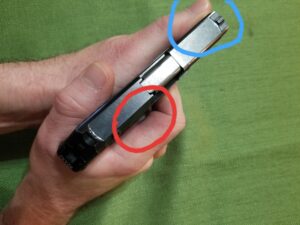
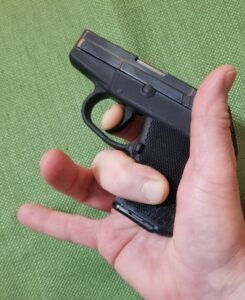
Replacing grips (or “stocks” as they are called on revolvers) used to be common. The manufacturers couldn’t know your hand size. They had to go with the one size fits most theory. Replacement grips can be thinner, thicker, wrap around, with or without finger grooves.
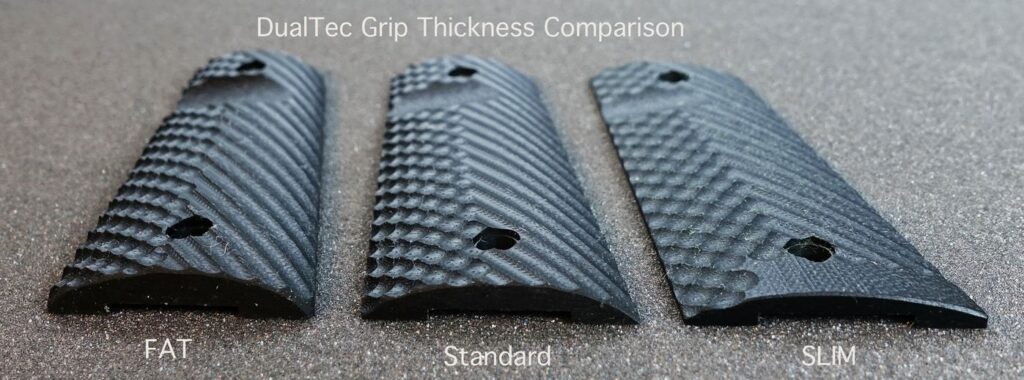
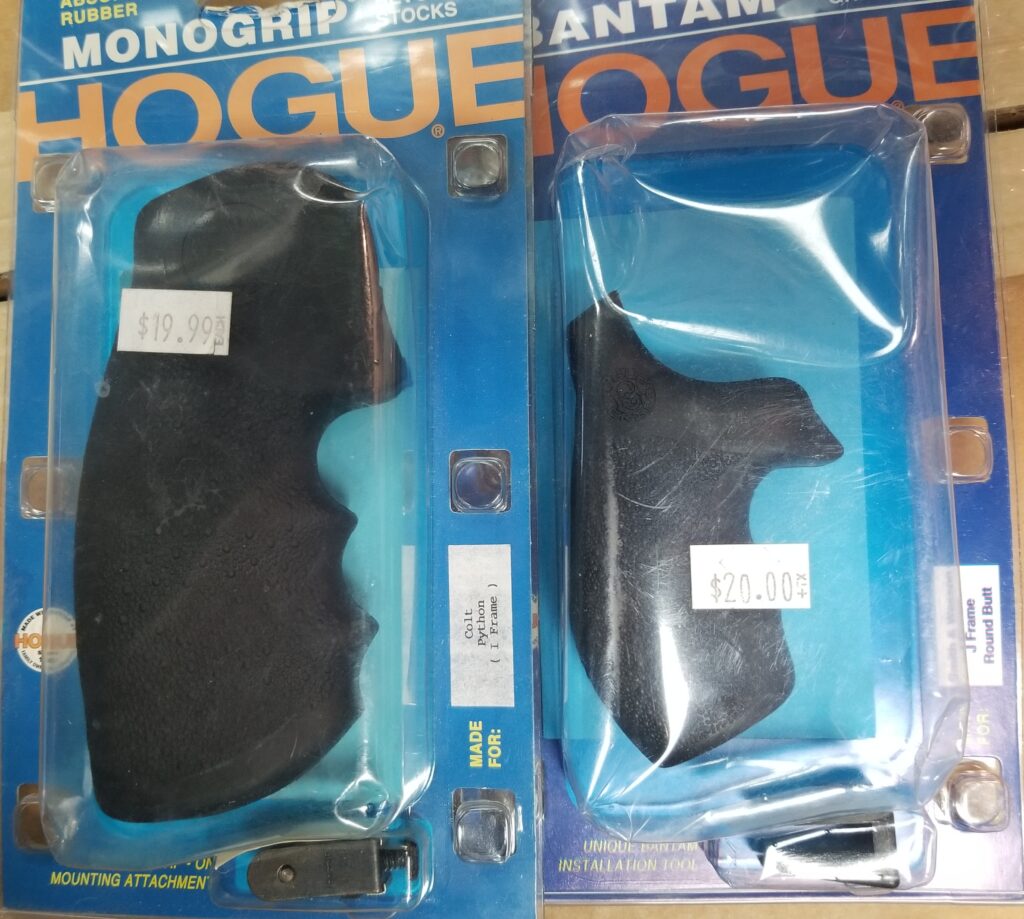
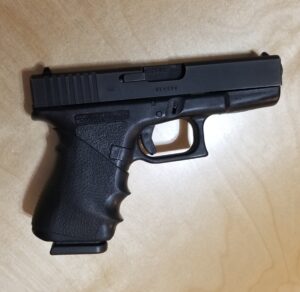
Today many pistols come with replaceable back-straps and side panels to create a better hold of the gun. If your weapon came with them, you should, with an unloaded gun, experiment and see which ones make the pistol fit your hands better.
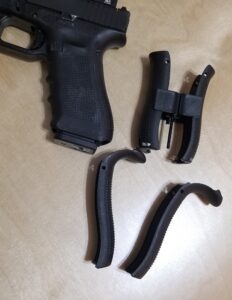
Ideally, with a semi-automatic pistol, you will have no space in the back of the handgun
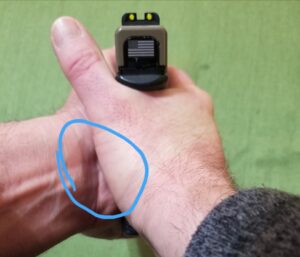
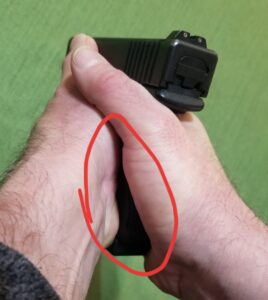
Your thumbs will be able to wrap around and either point forward or “flag” up.
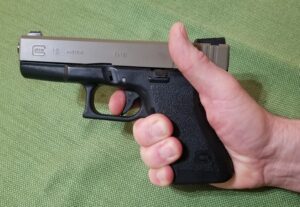
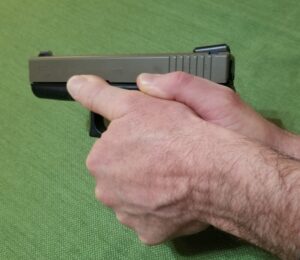
Your trigger finger should fit on the trigger, through the entire length of pull in one of two places, depending on the school or thought you are taught. The first is the pad of the tip of your trigger finger, the second choice (normally used on revolvers and pistols with long trigger pulls) is the joint of your trigger finger.
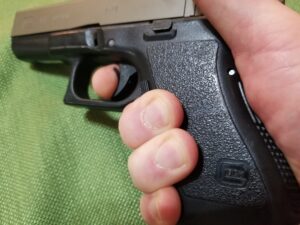
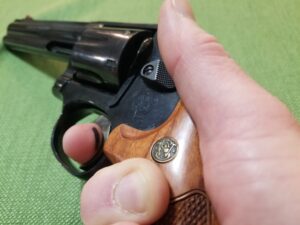
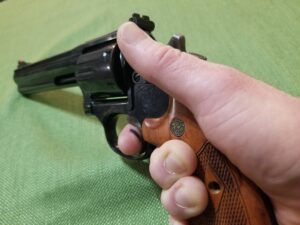
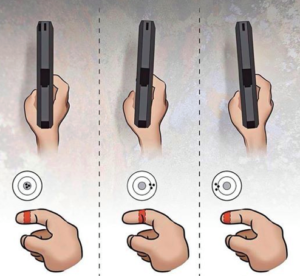
When you have a proper two-handed grip on the gun, your wrist should be almost perpendicular to the barrel, locked out. They should not be twisted in or out. The point is for the entire body to absorb the recoil. If your wrist is pointed in or out too much, they take more of the recoil and can easily shift the gun, causing you to fix you grip between shots.
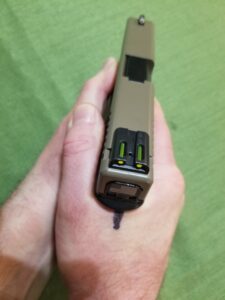
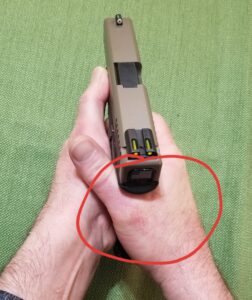
The key here is to find out how your handgun fits you now and what, if anything you need to do in order to get a more solid grip. You may need thicker or thinner grips. You may need to add or remove depth instead of width, or most likely change both width and depth in order to get your individual hands properly around your individual handgun.
There is more to shooting than this. Such things a the right way to “pull” the trigger, the proper way to grip your strong and weak hand palms and fingers, especially the pinky fingers are things that must be mastered in order to shoot accurately. To learn this, we go back to my 2nd paragraph above. You need to take a basics / fundamentals handgun class at an academy that has a good reputation with professional instructors.
Until we meet again, keep your booger hook of the bang switch until you are on target and ready to fire.
